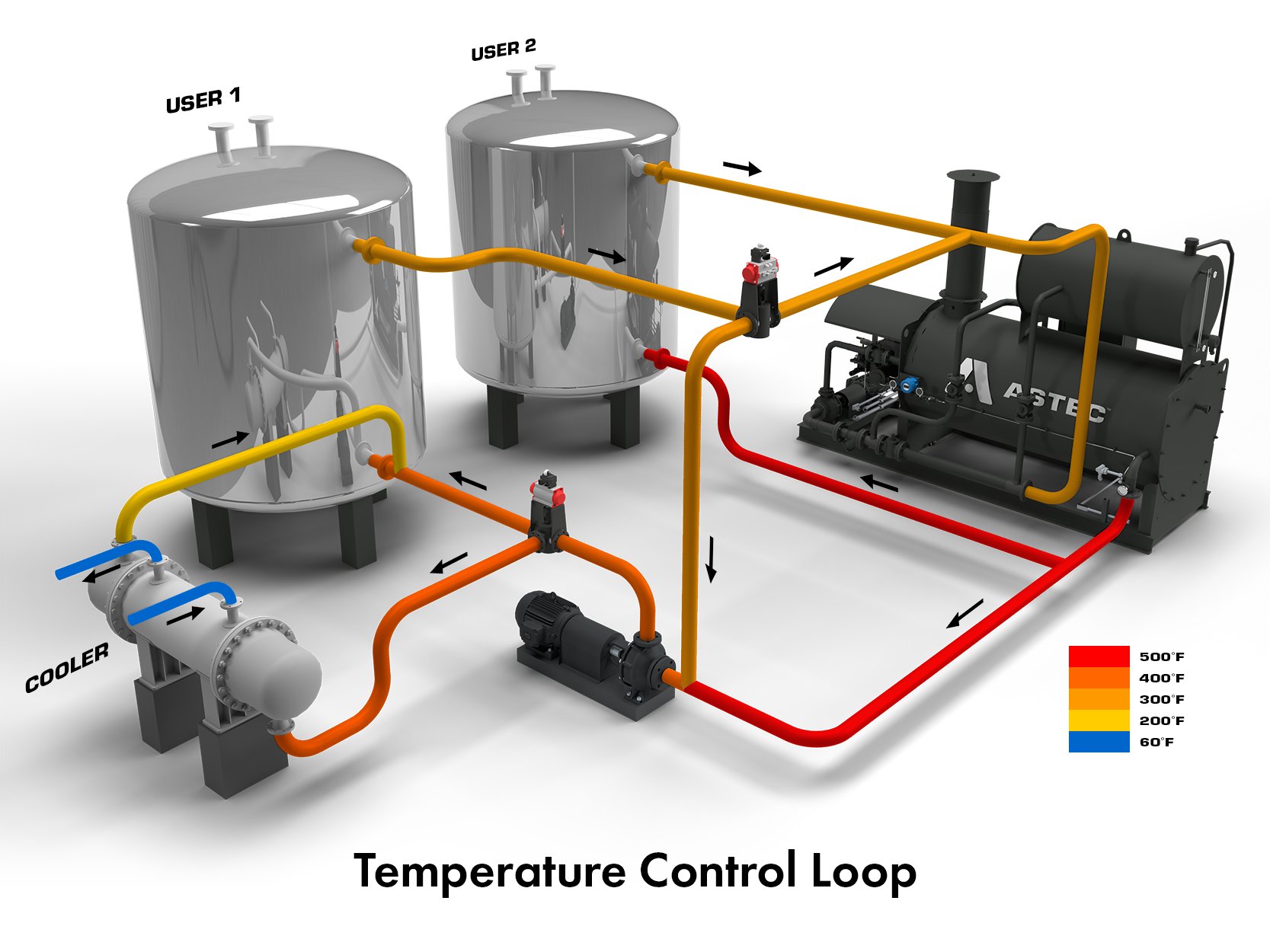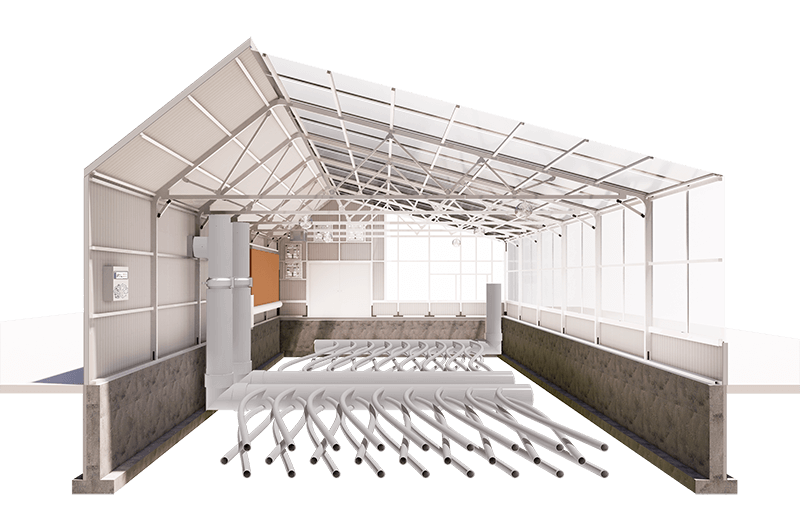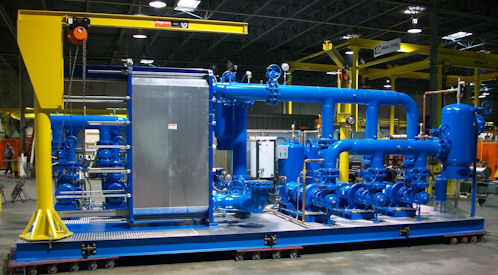DVS Heat Transfer Systems: The Future of Energy-Efficient Industrial Heating Solutions
Wiki Article
The Role of Heat Transfer Solutions in Sustainable Power Solutions for the Future
Heat transfer systems are essential in the mission for sustainable power options. They maximize thermal power monitoring, enhancing the performance of eco-friendly modern technologies. By using mechanisms like transmission, radiation, and convection, these systems decrease power losses. Their duty in solar thermal and geothermal applications is specifically significant. As innovations arise, the possibility for more innovations elevates vital inquiries regarding future energy methods. What growths will shape the landscape of sustainable energy?Understanding Heat Transfer Equipments

The Value of Thermal Power Administration
Effective thermal power management is important for making the most of energy performance and decreasing waste in numerous systems. By managing temperature and enhancing Heat transfer processes, companies can significantly minimize energy usage and operational expenses. Effective monitoring entails the execution of innovative technologies and methods that keep track of and manage thermal conditions within systems, guaranteeing that power resources are utilized successfully. Additionally, proper thermal power administration contributes to minimizing greenhouse gas discharges, aligning with global sustainability objectives. It likewise improves system reliability and efficiency, causing boosted product top quality and longer equipment lifespan. Eventually, focusing on thermal energy monitoring is a crucial step in the direction of developing more sustainable power solutions and fostering a liable strategy to power consumption in industrial and property contexts.Applications of Heat Transfer in Renewable Energy
While numerous renewable power resources assure sustainability, the effective application of Heat transfer plays a vital function in their performance. In wind energy systems, Heat transfer is used for turbine part cooling, enhancing efficiency and long life. Geothermal energy relies on reliable Heat exchange in between the earth's subsurface and the fluid flowing in the system, maximizing energy extraction. Biomass energy procedures likewise benefit from Heat transfer, as it assists in transforming organic materials right into functional fuel via pyrolysis and gasification. Additionally, in hydropower, keeping suitable temperatures in tanks can boost power output. Each of these applications demonstrates the critical significance of Heat transfer systems in enhancing renewable resource innovations, ultimately adding to a much more lasting energy future.Enhancing Solar Thermal Power Effectiveness
As solar thermal power systems proceed to advance, enhancing their effectiveness has actually ended up being important for making the most of power outcome. Breakthroughs in Heat transfer technologies, such as enhanced thermal storage space materials and innovative Heat exchangers, play a significant role in boosting efficiency. By making use of innovative materials that have superior thermal conductivity, systems can record and transfer Heat better. Furthermore, incorporating radar that comply with the sunlight's course assurances that collectors obtain suitable solar direct exposure throughout the day. Making use of nanotechnology in solar absorbers can better increase power absorption prices. Including automated control systems assists manage and manage temperature levels energy circulation effectively, leading to reduced losses and boosted overall system performance. These improvements pave the way for more lasting solar thermal energy services in the future.Geothermal Home Heating: A Lasting Solution
Geothermal heating offers a sensible choice for lasting energy, offering substantial ecological advantages with decreased greenhouse gas discharges. Its performance and cost-effectiveness make it an appealing choice to typical home heating systems. Challenges related to execution has to be resolved to optimize its prospective impact.Environmental Advantages of Geothermal
Although standard heating approaches contribute substantially to greenhouse gas emissions, geothermal heating presents an engaging choice that minimizes ecological influence. By taking advantage of the Planet's internal Heat, geothermal systems utilize a renewable resource resource, considerably lowering reliance on fossil fuels. This approach produces minimal carbon exhausts, making it a cleaner choice for industrial and property home heating. In addition, geothermal systems promote energy efficiency, as they require much less power compared to standard heater. DVS Heat Transfer Systems. The usage of geothermal energy likewise assists in minimizing air contamination, enhancing neighborhood air high quality and public health. As a sustainable service, geothermal home heating supports environment modification mitigation initiatives, placing itself as a vital component in the change towards a greener futureEfficiency and Cost-Effectiveness
Exactly how does geothermal home heating determine up in regards to performance and cost-effectiveness contrasted to conventional heating unit? Geothermal heating shows premium efficiency, frequently achieving a coefficient of efficiency (POLICE OFFICER) of 3 to 5, implying it produces three to five units of Heat for each system of power consumed. This efficiency translates into reduced operating expense, especially in areas with steady geothermal sources. First installment expenses can be greater than conventional systems; nevertheless, lasting savings on power bills and lowered maintenance costs can balance out these in advance investments. Furthermore, lots of federal governments incentivize geothermal systems through discounts and tax debts, improving their cost-effectiveness. On the whole, geothermal heating becomes a sustainable and financially feasible alternative to more conventional home heating solutions.Application Challenges and Solutions
Many challenges can hamper the prevalent execution of geothermal furnace, despite their clear benefits as a sustainable energy service. High first installation expenses usually deter financiers and homeowners, making funding a considerable barrier. In addition, the geographical limitations of appropriate geothermal websites restrict ease of access in particular regions. Neighborhood guidelines and permitting procedures can likewise complicate job development, bring about delays. In addition, public understanding and understanding of geothermal systems stay reduced, preventing approval. To deal with these obstacles, targeted education projects can enhance public expertise, while federal government incentives could reduce financial problems. Collaborating with neighborhood authorities to simplify laws may help with smoother project approvals, ultimately promoting the adoption of geothermal home heating as a viable, lasting power alternative.Innovations in Heat Transfer Technologies
Developments in Heat transfer innovations play a crucial function in boosting power efficiency and sustainability. Advanced Heat exchangers and phase modification materials go to the leading edge of these growths, offering significant improvements in thermal administration. These modern technologies not just optimize energy use yet additionally add to reducing environmental impact in different applications.Advanced Heat Exchangers
Advanced Heat exchangers play an essential role in boosting power efficiency throughout numerous applications in sustainable power solutions. These devices facilitate the transfer of Heat between 2 or even more fluids, considerably decreasing energy intake in processes such as industrial home heating, cooling, and power generation. Advancements in materials and layout, such as the usage of nanofluids and small configurations, have actually resulted in boosted thermal performance and lowered size demands. Furthermore, improvements in electronic monitoring and control systems enable maximized procedure, further boosting effectiveness. By lessening waste DVS Heat Transfer Systems Heat and taking full advantage of power recovery, progressed Heat exchangers add to lower carbon footprints and support the change toward eco-friendly innovations. Their proceeded development is crucial for accomplishing worldwide power sustainability goals.
Phase Adjustment Products
The assimilation of stage change materials (PCMs) into Heat transfer technologies stands for a considerable improvement in power administration and performance. PCMs soak up and release thermal energy during their stage modifications, making it possible for reliable temperature regulation in structure materials and power systems. By saving excess Heat throughout optimal periods and launching it when demand rises, PCMs add to pack changing and power preservation - DVS Heat Transfer Systems. This capability enhances the performance of renewable energy systems, especially in solar thermal applications. In addition, PCMs can boost the thermal convenience of interior environments, minimizing reliance on traditional heating and cooling down methods. As innovations in PCM solutions continue to arise, their role in sustainable power options is poised to grow, offering appealing opportunities for future research study and application
Future Leads for Heat Transfer in Sustainable Energy
As the demand for lasting energy solutions continues to increase, the function of Heat transfer systems is becoming significantly critical in shaping future innovations. Innovations in materials and designs are anticipated to improve effectiveness in Heat transfer, decreasing power losses in numerous applications. The combination of innovative thermal storage space systems, such as phase adjustment materials and thermochemical storage space, will certainly make it possible for better management of power sources. Study right into nanofluids and biomimetic Heat exchangers may additionally optimize thermal efficiency. Moreover, the fostering of wise modern technologies will permit real-time monitoring and adaptive control of Heat transfer processes. These improvements are poised to greatly add to the overall efficiency and sustainability of energy systems, leading the way for a more energy-efficient future.Frequently Asked Questions
Exactly How Can Individuals Execute Heat Transfer Systems at Home?

People can implement Heat transfer systems at home by installing energy-efficient devices, making use of radiant heat, and optimizing insulation. These measures boost power effectiveness, decrease costs, and promote sustainable techniques in household settings.

What Are the Costs Related To Setting Up Heat Transfer Systems?
The costs related to mounting Heat transfer systems vary widely, typically incorporating equipment, installation labor, and upkeep. Aspects such as system type, home size, and regional laws greatly influence the overall expense involved.Exist Government Rewards for Heat Transfer System Installations?
Government incentives for Heat transfer system installments vary by area and can include tax obligation refunds, credit histories, and grants. These economic advantages intend to motivate adoption, inevitably advertising power performance and decreasing environmental impact within neighborhoods.Exactly How Do Heat Transfer Solutions Effect Energy Bills?
Heat transfer systems significantly influence energy expenses by enhancing power performance. By improving the transfer of Heat, these systems minimize power intake, causing reduced utility expenses and producing an extra lasting approach to power monitoring.What Upkeep Is Required for Heat Transfer Equipments?
Maintenance for Heat transfer systems includes regular evaluations, cleaning of components, checking liquid degrees, guaranteeing proper insulation, and changing worn parts. These jobs help keep performance, stop breakdowns, and extend the system's functional lifespan.These systems promote the activity of thermal energy from one tool to an additional, making it possible for the transfer of Heat for heating, cooling, or power generation functions. Geothermal energy depends on effective Heat exchange in between the earth's subsurface and the liquid distributing in the system, making best use of energy removal. In addition, geothermal systems advertise power effectiveness, as they call for much less energy contrasted to traditional home heating systems. Advanced Heat exchangers play an important duty in improving power effectiveness across different applications in lasting power services. Heat transfer systems notably affect energy expenses by enhancing power performance.
Report this wiki page